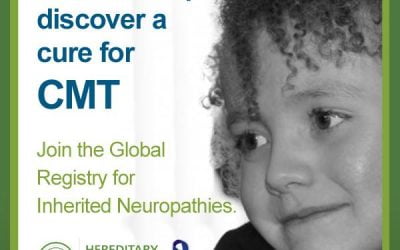 DR. LUCIA NOTTERPEK, HNF Grant Recipient
DR. LUCIA NOTTERPEK, HNF Grant Recipient
Progress in understanding the genetic causes of Charcot-Marie-Tooth (CMT) disease type 1A (CMT1A) is important for advancing the development of treatments for CMT patients. In the majority of CMT1A patients duplication of the peripheral myelin protein 22 (PMP22) gene results in overproduction of the PMP22 RNA and protein in myelin forming Schwann cells. The mechanism by which increased amounts of PMP22 impair the ability of Schwann cells to maintain healthy myelin is still under investigation, but decreasing PMP22 expression could correct the disease phenotype.
With recent advances in molecular biology it is now possible to turn off undesired gene products within cells and test for functional improvement. Our studies have identified specific regions in the PMP22 gene that are targets for regulation by small RNA molecules, called microRNAs (MiRNAs). These are non-coding of target mRNAs and prevent their conversion into protein. Therefore, miRNAs have the ability to correct undesired gene expression in a highly specific manner.
In previous collaborative work with a group of investigators including Dr Rolf Renne from the University of Florida, Dr. Alex Murashov from East Carolina University and Dr. Lynn Hudson from the NIH-NINDS, we validated a microRNA known as miR29a as a reagent that corrected the expression level of PMP22 in rodent Schwann cells. Our research suggests that miR29a may be able to work in mice, rats and possibly humans, prompting us to expand our work. In a pilot study supported by HNF we seek to demonstrate that PMP22 levels can be reduced by miR29a in cells from CMT1A patients. We will subsequently test if miR29a improves the phenotypes of these cells in culture. If successful, we will next determine if this approach also corrects the myelination impairment of Schwann cells with PMP22 overproduction. Completion of these pilot studies will demonstrate if miR29a is useful for therapy development.
Due to the sophisticated nature of the peripheral nervous system we need to use specific delivery reagents, known as liposomes or nanoparticles to target the cells in humans. Therefore the miRNA approach may provide an opportunity to explore novel treatment strategies for CMT1A neuropathies. Donate to CMT research at www.hnf-cure.org.






I recently read that CMT1A could genetically cause schizophrenia? This is the first time I have seen a connection between CMT1A and a mental disorder! It also mentioned Autism.
My son has inherited C,T1A from me. It was either spontaneous or both my parents were carriers of the gene? No one has it, except my son and I. He also has schizophrenia which showed up his late teens. He has a severe case of CMT and schizophrenia. Is there any hope for him? He has the paranoid type and is afraid of Doctors.